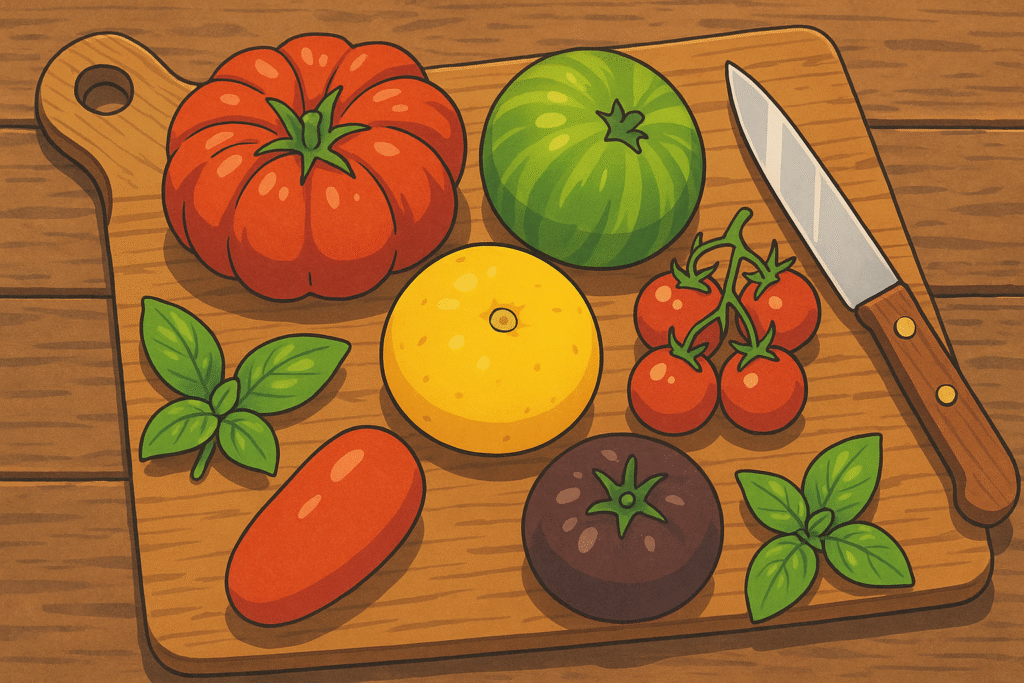Tomato (Solanum lycopersicum)

About Tomato
Tomatoes are everywhere — in sauces, salads, stews, and salsas. Juicy and sweet with a touch of acidity, tomatoes are among the most versatile fruits in the culinary world (yes, fruit). Yet not all tomatoes are created equal — from beefsteaks to San Marzanos to tiny cherry bursts, the variety is staggering.
The tomato is as iconic in Italian cuisine as it is essential to Mexican, Indian, and Middle Eastern kitchens. It’s also a fruit that changed global cooking forever.
The History of Tomato
Tomatoes are native to the Andes, specifically present-day Peru, Ecuador, and northern Chile. Early wild varieties were small and tart — more like berries. Cultivated first by the Aztecs and Mayans, tomatoes made their way to Europe via Spanish colonizers in the 1500s.
At first, Europeans distrusted them — they were nicknamed “love apples” and thought to be poisonous due to their relation to deadly nightshade. But eventually, culinary adoption spread — with Italy, Spain, and Portugal embracing the tomato wholeheartedly.
Today, the tomato is global — a staple in curries, soups, condiments, and cold drinks alike.
The Science of Tomato
Tomatoes are rich in lycopene, a powerful antioxidant that gives them their red hue and health properties. They’re also loaded with glutamic acid, which gives them their signature umami flavor.
Ripening is driven by ethylene gas, which is why tomatoes continue maturing after harvest — and why commercial tomatoes often taste bland if picked too early.
The Geography of Tomato
Tomatoes grow best in warm, sunny climates with rich, well-drained soil. They thrive in the Mediterranean, parts of California, Mexico, and India. Altitude, sun exposure, and soil all influence the tomato’s flavor — which is why a tomato grown in Naples tastes different from one in Oregon.
Local farming traditions shape flavor: dry-farmed tomatoes in California are intense and sweet due to water stress. In Japan, growers use mineral-rich volcanic soils to produce hyper-sweet fruit.
Varieties of Tomato
Roma
Plum-shaped, dense, great for sauces.
Brandywine
Heirloom with rich, sweet flavor.
San Marzano
Italian gold standard for cooking.
Cherry
Sweet, bite-sized — perfect raw.
Green Zebra
Tart and striped, excellent in salsas and salads.
FAQs All your questions about Tomato: answered
Are tomatoes fruits or vegetables?
Botanically, they’re fruits. Legally (in the US), they were ruled vegetables in 1893 for tax purposes!
Why are store-bought tomatoes bland?
They’re often picked unripe and ripened artificially, which dulls flavor.
What’s the best way to store tomatoes?
Room temperature! Refrigeration can make them mealy unless already fully ripe.
Can you eat tomato leaves?
Technically yes, but they contain small amounts of alkaloids — best avoided unless cooked and used in moderation.